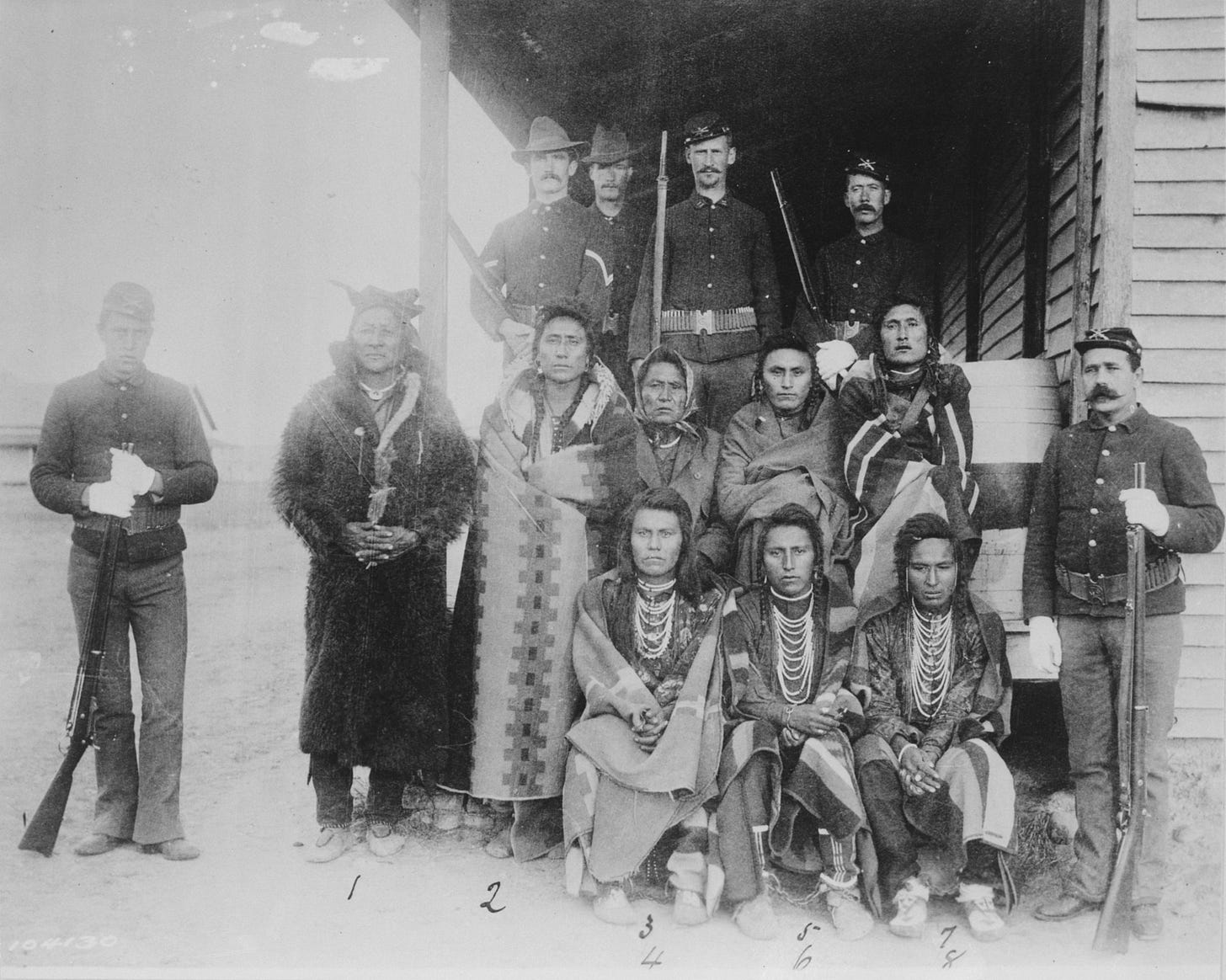
Curley, a Crow Indian chief and only survivor of the Custer Massacre, refused to sell anymore of their land to the federal government, and said, according to Ernest Thomson Seton (The Gospel of the Red Man, pp. 58, 59.), “The soil you see is not ordinary soil—it is the dust of the blood, the flesh, and the bones of our ancestors. We fought and bled and died to keep other Indians from taking it, and we fought and bled and died helping the Whites. You will have to dig down through the surface before you can find nature’s earth, as the upper portion is Crow. The land as it is, is my blood and my dead; it is consecrated; and I do not want to give up any portion of it.”
Deloria observed how this harmony with the Earth is an attitude that is found nowhere else in the world, but I leave it to my reader to determine whether or not this sentiment is true.

From Montana Tribal Histories, “The Crow Tribe too relates the story of a migration journey, traveling from the east to the west and arriving in Montana sometime in the 1600s. The Crow or Apsáalooke, were once part of the Hidatsa Tribe living along the Missouri. Earlier history traces tribal movement from the Northeast. The Tribe sent out several hunting parties for buffalo. All but one returned empty-handed. The hunters that traveled west returned with packs filled with bufalo. It is said that this event influenced the Tribe’s movement west to perhaps northern Minnesota and southern Manitoba, and later to northeast North Dakota.”
From Montana Indians, “The ancestors of the Crow Indians came from a land of many lakes, probably in the headwaters of the Mississippi or further north in the Winnipeg Lake region. They eventually settled along the Missouri River in what are now the states of North and South Dakota. The people lived in semi-permanent villages of lodges covered with earth. They became known as the people who lived in earthen lodges. Nearly 400 years ago the people divided into two factions. One group, the Hidatsa, remained along the Missouri. The other group, the Apsaalooké or Biiluuke, migrated westward and eventually claimed most of what is now eastern Montana and northern Wyoming as homeland. At the time of the breakup, this latter group, numbering about 500, was made up of several families.”
In other words, they have no antiquity in Montana. So if any of the megaliths in Montana are man-made, the Crow Tribe wasn’t there. The Crow people look similar to the Oaxacans of Mexico. Keep reading to learn about a possible connection this tribe has with Egypt, and for those who want to dive deep into Mexico’s connections with the Old World, read my latest book Spirit Whirled: Terminalia.
Become a member to access the rest of this article.
Keep reading with a 7-day free trial
Subscribe to Ancient History, Mythology, & Epic Fantasy to keep reading this post and get 7 days of free access to the full post archives.




